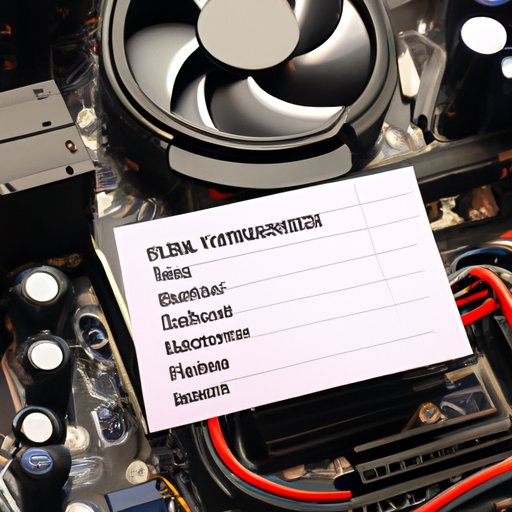
Introduction
As a gamer or graphic designer, you know how important a graphics card is for your computer. Without it, you wouldn’t be able to play the latest games or run the most demanding software. But do you know what graphics card you currently have? Knowing your current graphics card can help you determine if you need an upgrade or troubleshoot issues you may be facing. In this article, we will cover everything you need to know about how to check what graphics card you have.
Beginner’s Guide
Before we dive into the step-by-step guide, let’s define some key terms. A graphics card is a hardware component in your computer that processes and displays images and video on your screen. The graphics processing unit (GPU) is the chip on the graphics card that does the actual processing. The video memory, also known as VRAM, is the memory dedicated to storing image and video data for your GPU to access quickly.
It’s important to check your graphics card for a few reasons. First, if you’re experiencing performance issues, checking your graphics card can help you determine if it’s the culprit. Second, if you’re considering purchasing a new game or software, you’ll want to make sure your graphics card is compatible with the system requirements. Finally, if you’re considering upgrading your graphics card, knowing your current one will help you determine what upgrades are compatible.
For beginners, checking your graphics card may seem like a daunting task. Here is a simple checklist to follow:
- Click on the Windows Start Menu and type “Device Manager”
- Click on “Display adapters” to expand the category
- Your graphics card will be listed. Note the name of the graphics card and the amount of VRAM it has.
Step-by-Step Guide
For a more comprehensive guide on how to check your graphics card, follow these steps:
- Right-click on the Windows Start Menu and select “Device Manager”
- Scroll down to “Display adapters” and click the arrow to expand the category
- Your graphics card will be listed. Right-click on it and select “Properties”
- Click on the “Details” tab and select “Hardware Ids” from the drop-down menu
- Copy the text within the “Value” box
- Paste the text into a search engine and look for the name of your graphics card
It’s important to note that some computers may have an integrated graphics card, meaning it’s built into the computer’s motherboard and not a separate hardware component. If your computer has an integrated graphics card, it may not show up under “Display adapters” in the Device Manager. In this case, you may need to check your computer’s manual or specifications to determine its graphics capabilities.
Video Guide
If you’re a visual learner, you may find it helpful to follow a video guide. Here is a great video that demonstrates how to check what graphics card you have:
Comparison Guide
There are a few tools and software available to check your graphics card. Here is a comparison of some popular tools:
| Tool/Software | Pros | Cons |
|---|---|---|
| GPU-Z | Offers detailed information on graphics card and GPU; Allows you to monitor your graphics card while in use | Can be overwhelming for beginners; No built-in benchmarking tool |
| CPU-Z | Offers information on other hardware components in addition to graphics card; User-friendly interface | No benchmarking tool; Limited information on graphics card |
| Windows System Information | Easy to access; Provides basic information on graphics card and other hardware components | No benchmarking tool; Limited information on graphics card |
When choosing a tool, consider what information you’re looking for and how comfortable you are with using technical software.
Troubleshooting Article
If you’re having trouble checking your graphics card, here are some common issues and solutions:
- Device not showing up in Device Manager: Make sure your graphics card is properly installed and plugged in. Try restarting your computer and checking again.
- No search results when searching for hardware IDs: Try searching for the manufacturer’s website and navigate to their support page. They should have a list of their graphics card models.
- Inaccurate or incomplete information: Try using a different tool or software to cross-check and verify the information.
If you’re still experiencing issues, consider seeking help from online forums or contacting technical support from your computer or graphics card manufacturer.
Conclusion
Knowing what graphics card you have is essential for troubleshooting issues, compatibility checks, and upgrades. With this guide, you should have a good understanding of how to check your graphics card and what tools and software to use. Remember to check your graphics card regularly to ensure your computer is running at its best.





